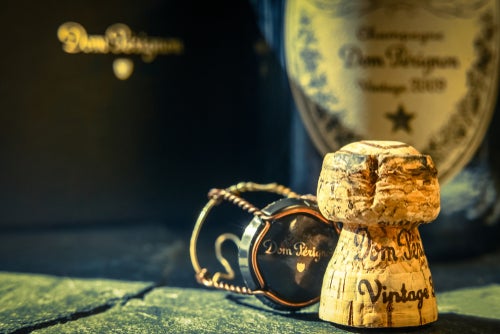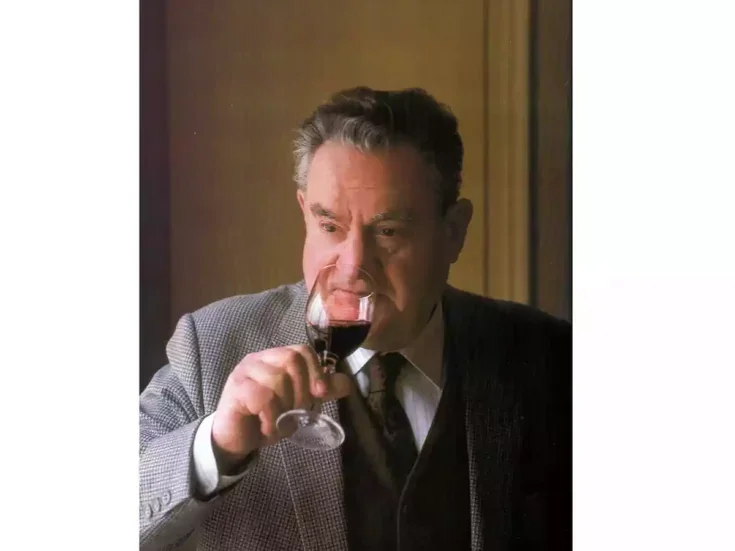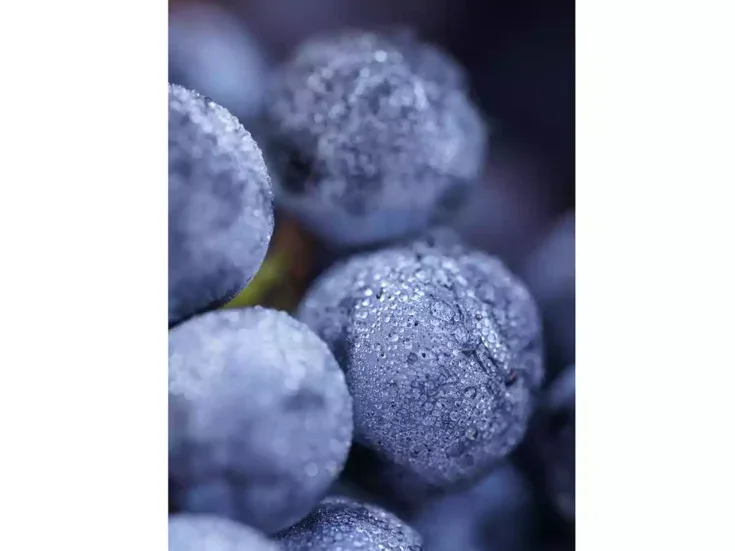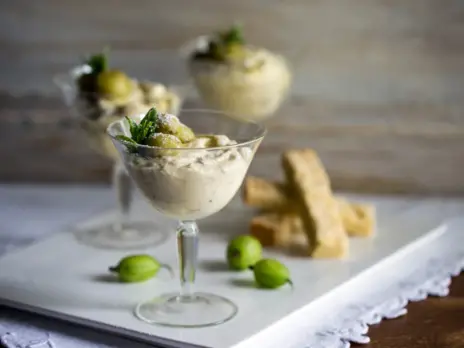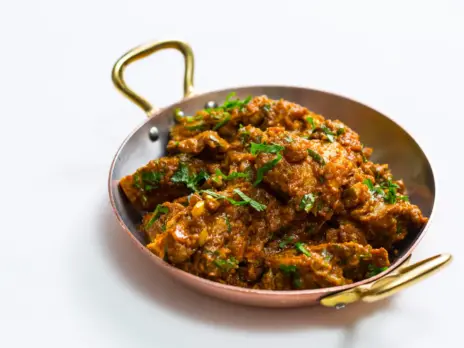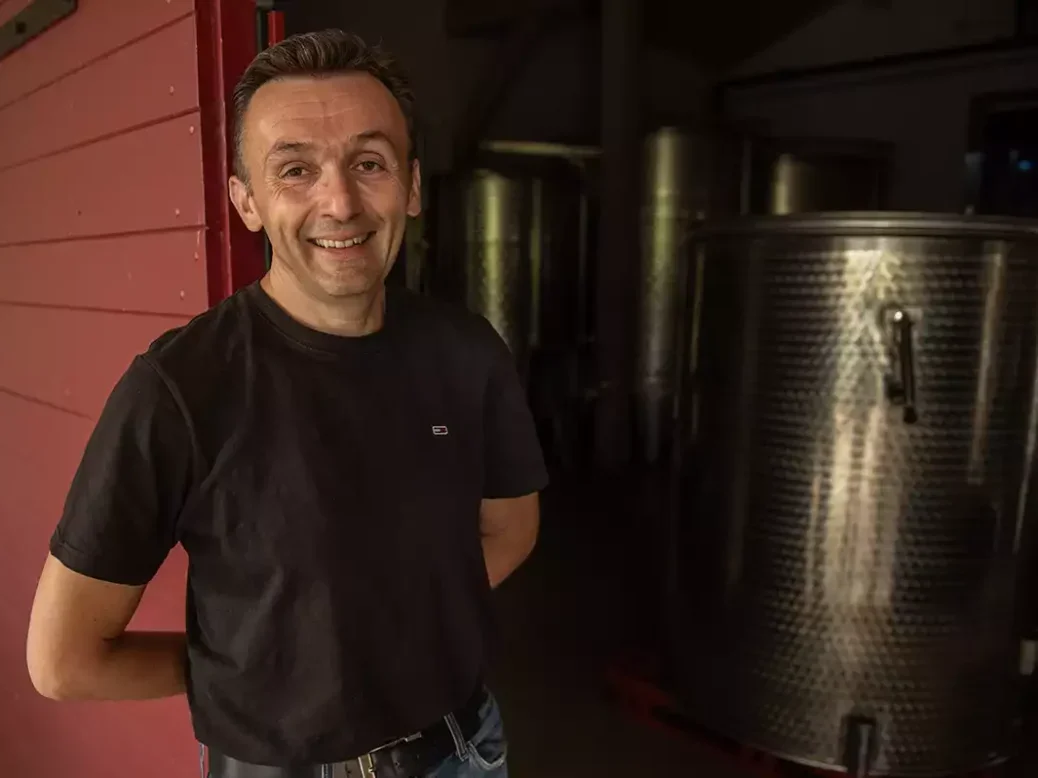
After a successful stint at Domaine Leflaive, during which he was instrumental in restoring its reputation at the top of the Burgundy pecking order, Pierre Vincent is now pursuing his ambition to make wine under his own name.
Christmas Eve 2024, 8:25am. After three murky days when the cloud sat heavy on the Côte d’Or, obscuring vineyard and village alike, a dazzling sun brightened the slope, making it easy to find Domaine Pierre Vincent on the outskirts of Auxey-Duresses. Leaving Meursault behind, it is a sharp left off the D973 just before the village, down a rutted track that is subject to waterlogging no matter the season. It’s an unprepossessing approach—all the attraction here is in the wines. But first, some context.
Rolling the clock back 20 years, I first met Pierre Vincent on October 12, 2004, early in his career, when he was working at Maison Jaffelin in Beaune, part of the Boisset group. As a schoolboy, he had harbored no winemaking ambitions, though he had an interest in agriculture, given that his father bred Charolais cattle in the Saône-et-Loire département: “I was fascinated by nature—the technique and the analytical side of what my father did—though I did not want to join him in his profession.” After school, he studied viticulture and enology in Dijon, and following briefs spells at Antonin Guyon in Savigny-lès-Beaune and Jaffelin, he succeeded Pascal Marchand at Domaine de la Vougeraie in 2006. At the time, and notwithstanding Marchand’s good work, Vougeraie had yet to establish a solid name for itself; I still remember mentioning Vougeraie wines only to be asked if I meant Vougeot, even by Burgundians.
The domaine was founded by siblings Jean-Charles and Nathalie Boisset in 1999 and laid claim to a magnificent roster of vineyard holdings. Working with these over the decade he was in charge, Vincent solidified both his name and the domaine’s reputation. Without making radical changes, he steered the Vougeraie style toward greater finesse, with less immediate impact on the palate, and his assured methods soon gained widespread approbation. Thus, after the early, unexpected death of Anne-Claude Leflaive, châtelaine at Domaine Leflaive in Puligny-Montrachet, her successor, Brice de la Morandière, recruited Vincent to take over management duties in Puligny.
In some respects, Domaine Leflaive is the Côte de Beaune’s white-wine equivalent of Domaine de la Romanée-Conti in the Côte de Nuits, and it would be difficult to overstate its exalted status at the turn of the century. Renowned around the world for wines of peerless beauty, its reputation surged under the guidance of Anne-Claude Leflaive, particularly after she converted the domaine to biodynamics. Yet that reputation took a severe battering in the early years of this century, for despite her biodynamic practices—and notwithstanding the wines’ magnificence in youth—far too many bottles were corrupted by premature oxidation, a malaise that Leflaive showed little inclination to address.
There was much to be done when Vincent joined in 2017, and there was a degree of urgency, too, if the slide in the domaine’s name was to be arrested and reversed. For consumers, the most obvious change was the switch to Diam closures, but many adjustments to winemaking practices were also being applied in the background. Together, de la Morandière and Vincent steadied the ship, and it seemed reasonable to suppose that Vincent would work out his days to retirement in Puligny; he had reached the top of the employment tree.
A white range bookended by brilliance
This was, of course, to reckon without his desire to make wine in his own name—surely augmented by a hankering to make red wine again. To this line of inquiry, Vincent responds with a smile and a gesture. His opportunity came about thanks to investors Hervé Kratiroff and Eric Versini, and together they acquired Domaine des Terres de Velle in July 2023. Thereafter, and until the end of 2024, Vincent lived a double life, spending mornings at his newly minted eponymous domaine and afternoons at Domaine Leflaive.
The 7ha (17-acre) domaine, though not large, encompasses an impressive roster of vineyard holdings, divided roughly into five white and two red, and spread across 20 appellations. Many of the cuvées amount to no more than a handful of barrels, a circumstance in which Vincent revels, mentioning that for him his eight barrels of Puligny-Montrachet in a regular vintage constitutes a large cuvée. The winery is located beside the River Velle—hence the waterlogged approach track—meaning that the cellar is unusually humid, reducing the need to top up the barrels.
Vincent’s winemaking is relatively simple. After being picked into 26lb (12kg) boxes, the white grapes are sorted and go straight to the press without crushing, followed by a short settling in stainless-steel tank before transfer to barrel for fermentation. He is happy for plenty of solids to make it to barrel. “I like turbidity,” he says. “I am a partisan for a high level of lees.” Bâtonnage is employed between alcoholic and malolactic fermentation, and a year in barrel is followed by six months back in tank before bottling. Dogma plays little part in Vincent’s approach, but he is adamant that the period in tank is essential for pure, clean flavors and harmony on the palate. Earlier harvesting than under the previous regimen will also play a part in keeping the house style fresh; rich, opulent textures are to be avoided: “Meursault foie gras is not my style.”
The white range is bookended by brilliance—from humble Aligoté, to patrician Corton-Charlemagne. The former comes from two vineyards within Auxey-Duresses and displays a bracing citrus character, fresh and perky, with a saline, mineral snap on the finish. It is lean and precise, though not searing, with a dry bite that is almost tannic. Élevage is in a 60/40 combination of oak (10% new) and amphorae, and the wine is an exemplar for a style of white Burgundy that is gaining greater recognition and approval. The days of curling the lip and reaching for the cassis at the mention of Aligoté are gone.
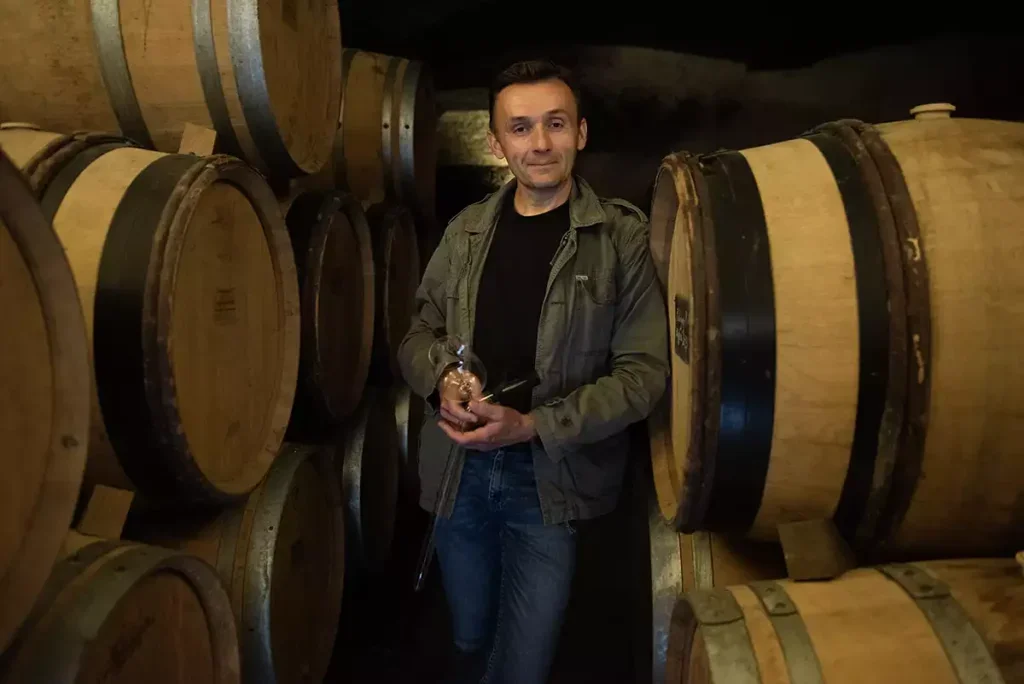
The Corton-Charlemagne is a stunning wine, a real rival to the Montrachets farther south that garner the lion’s share of attention when the world’s-best-Chardonnay plaudits are being handed out. It is an understandable situation, for the broad sweep of vineyard that wraps around the Hill of Corton encompasses great variety, most especially aspect, which swings from due east in Ladoix-Serrigny to due west, and more, in Pernand-Vergelesses. Holdings are scattered, too, as with Pierre Vincent’s two plots that total half-a-hectare (1.2 acres). One, planted in 1966, lies on the southwestern slope in Aloxe-Corton; the other, “around the corner” in Pernand-Vergelesses, where in summer it can be 11 am before the morning sun touches the vines, planted in 1949. As a result, Vincent harvests the Aloxe plot five days ahead of the northwest-facing thin strip of vineyard in Pernand. Each is vinified separately and only assembled into the final blend after the year in oak, to “marry” during the six months in vat. The result is a wine of grace and harmony, elegance and poise—an aristocratic wine, fully deserving of its grand cru status. Its polished pearl of flavor challenges the vinous lexicon, defying attempts to corral it with mere words.
Between these poles of excellence comes a dozen other whites, some of which are made from vines now approaching their centenary, such as the Meursault Les Grands Charrons, planted in 1929, the Meursault Premier Cru Les Charmes, planted in 1936, and the Puligny-Montrachet Premier Cru Les Referts, a relative youngster from 1949. Speaking of this old-vine heritage, Vincent says, “They are my power but also my responsibility […]. We need to understand the old vines […]. Preserving them is the challenge of my life.” He replants vines as needed, around 1–2% annually, and despite the challenge, he is under no illusion about the great fortune of having such venerable vineyards to work with. As to the wines, the Grands Charrons is smooth and succulent, the Charmes is weightier but carries it lightly, and the Referts is poised and elegant. There is great energy in all of them, but this is harmonious, finessed energy—there isn’t a hair out of place.
Where elegance is the hallmark of Vincent’s white wines, the reds carry a more vigorous flavor profile—a firmer handshake, as it were. He is a lover of whole-bunch fermentation, usually in the range of 30–70%. “I always use some whole bunches, though I only decide at the sorting table […]. They bring flavors of spice and dried flowers, as well as greater freshness on the palate […]. I like to play with whole bunches. I layer them, millefeuille fashion.” This means the stainless-steel vat is filled alternately with whole bunches and destemmed grapes, after which the temperature is held at 54–57°F (12–14°C) for a few days of maceration before it is allowed to rise naturally for fermentation to begin, though he never lets it exceed 82°F (28°C). He relies principally on remontage for extraction, with sparing use of pigeage, perhaps three in three weeks. Thereafter, élevage is in standard 228-liter pièces from Chassin, Tonnellerie de Mercurey, and Berthomieu, with a modest proportion of new barrels, perhaps 15%.
The resulting wines display an abundance of ripe fruit, intense rather than concentrated, with a lovely waft of sweet incense running through them like a family DNA. The Auxey-Duresses Les Closeaux—made with 40% whole bunches from 1955 vines—is shot through with gentle spice, while the Volnay Ez Blanches (50% whole-bunch, 1959) takes this character a step further with greater complexity and depth of flavor. Ez Blanches lies above Clos des Chênes, rising to 1,150ft (350m) at the tree line and bordering Monthelie. Hence it is separated by little more than half a mile (1km) as the crow flies from the Monthelie premier cru Les Duresses vineyard, yet there is a clear difference in style. From his 0.17ha (0.4-acre) holding, Vincent produces about four barrels of notably perky wine with a mild tannic grip. Finally, the Volnay Premier Cru Le Ronceret, downslope neighbor of Champans, marches to a sterner beat, courtesy of dense fruit, firm structure, and impressive depth.
Pierre Vincent: Experience, expertise, and maturity
It is too early to cast definitive judgment on Domaine Pierre Vincent, but it is not casting a hostage to fortune to say that Vincent and his partners have hit the ground running, thanks to three significant factors. First, the good standing of Domaine des Terres de Velles before they bought it. Though it is a young domaine, having been founded in 2009, it quickly established a sound reputation, as Jasper Morris MW comments in his book Inside Burgundy: “These are smart wines in both colours, offering a good range of bottles at affordable prices.” And, judging by samples of the 2023 vintage from barrel in July and again in December 2024, smart is about to get smarter. In short, they did not buy a pig in a poke. Second, the impressive age of the vines. As mentioned, for several of the wines above it is not unusual for them to be made from vines that have reached their half-century, with the near-centenarians bringing the average age up to nearly 60. Such a wealth of maturity can be thought of as a vinous trust fund, a deep reservoir of potential waiting to be tapped by a dexterous hand. Third, that hand comes in the shape of Pierre Vincent, whose 20 years’ experience and acknowledged talent as a winemaker make him the perfect custodian for such riches.
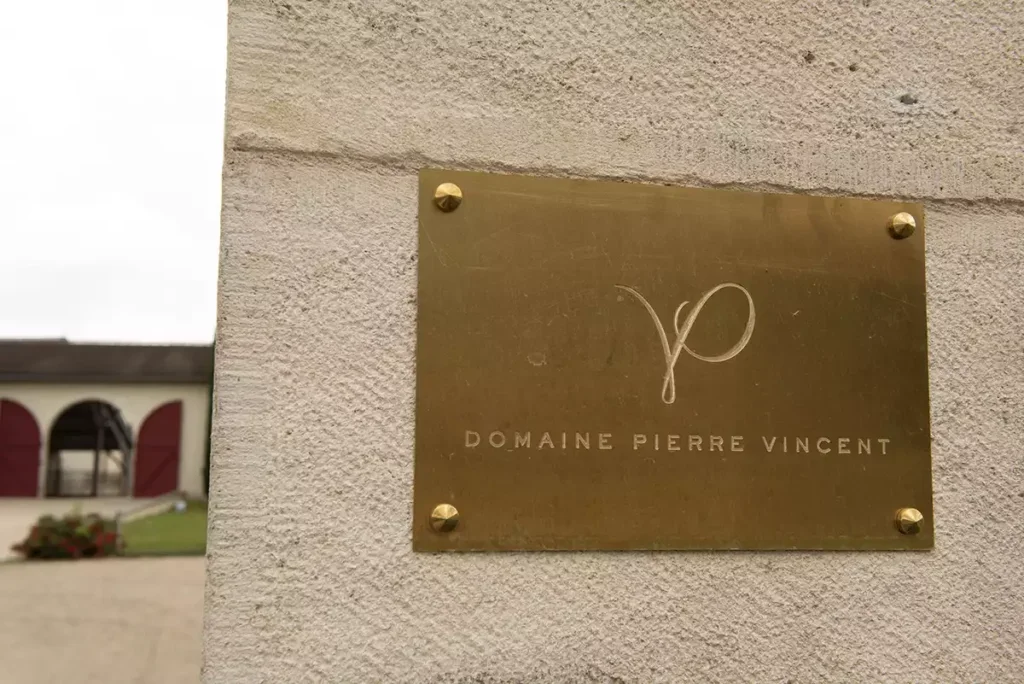
Though he evinces no world-conquering ambitions, it takes only a few minutes in Vincent’s company to note the firm resolve beneath the smiling, youthful features. He is adamant, for example, that he wants to remain solely as a domaine and not follow the “hybrid” model that he says became popular after the meager 2021 harvest, when many domaines supplemented their all-too-modest harvest by buying-in grapes. This practice has continued since, so that today their production is a combination of domaine and négociant wines. In addition—and this is more sensed than explicitly stated—one feels that Vincent has found his comfort zone, that however prestigious it may have been to manage a domaine such as Leflaive, it was not his metier.
And does he hope that someday in the future a few Côte de Nuits vineyards might be added to his exclusively Côte de Beaune portfolio? “Yes, absolutely!”

